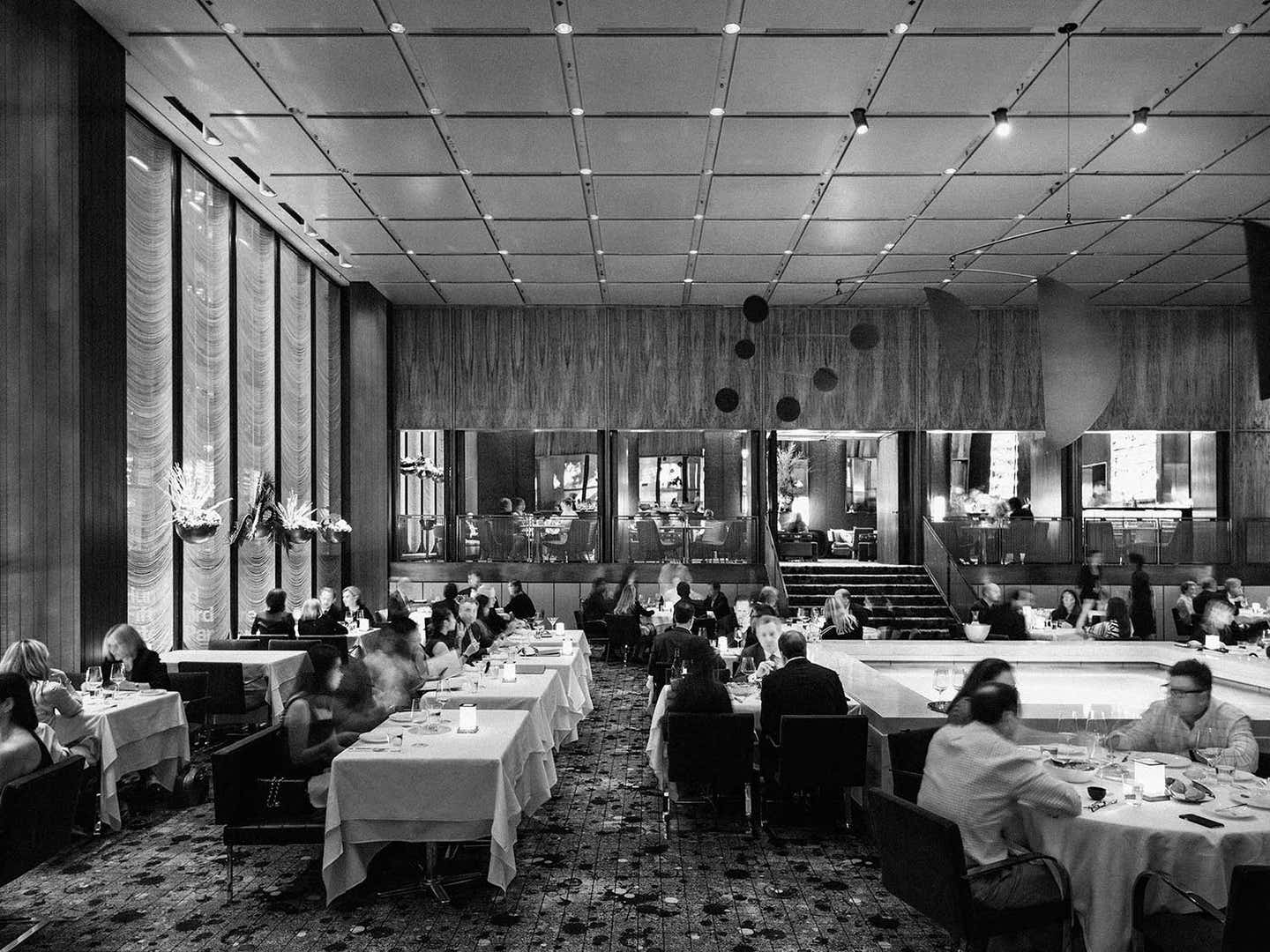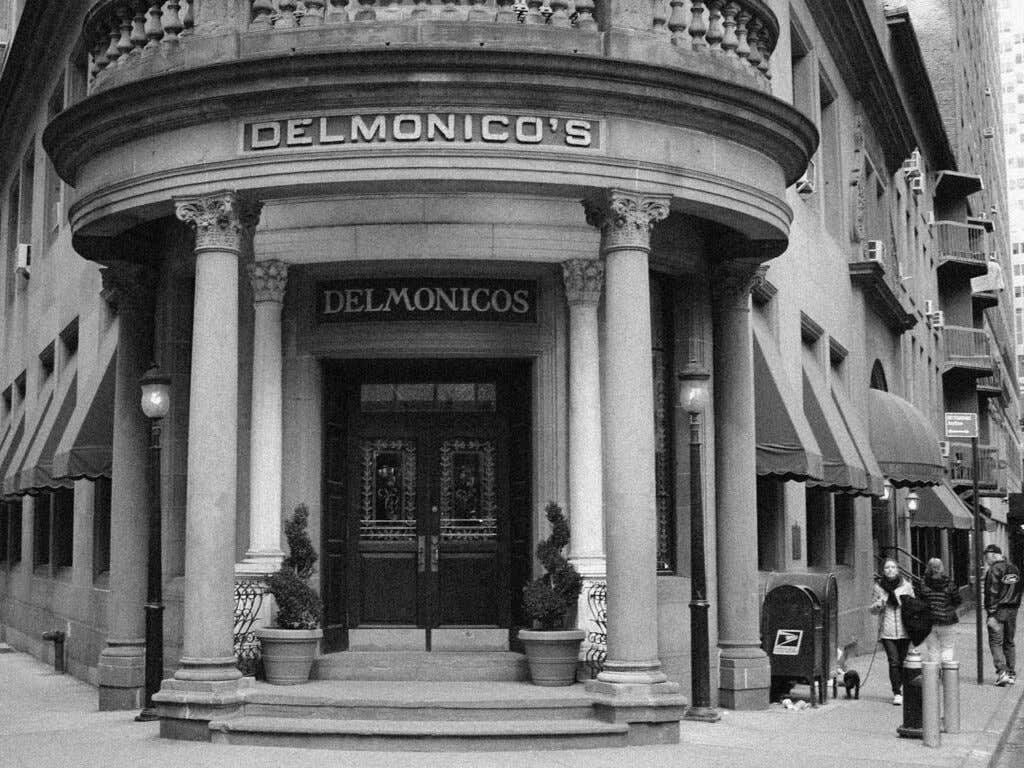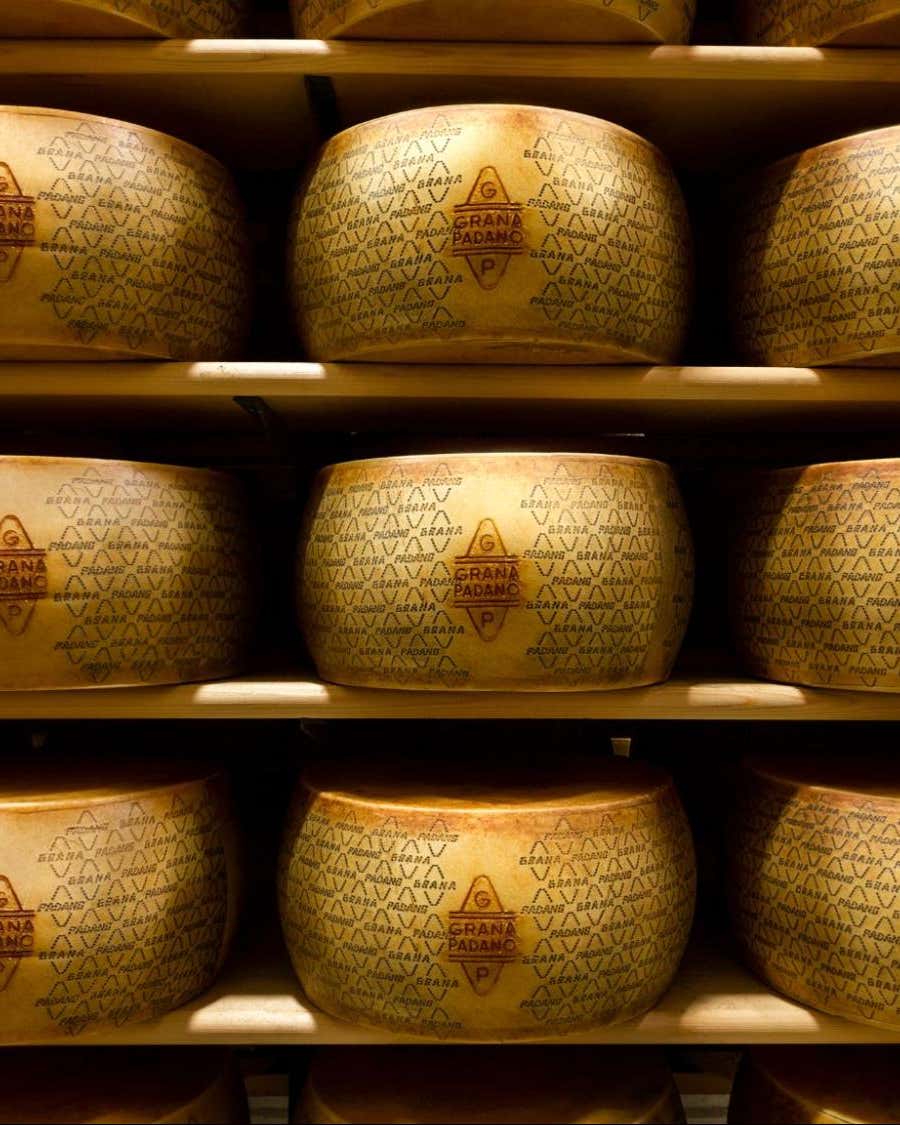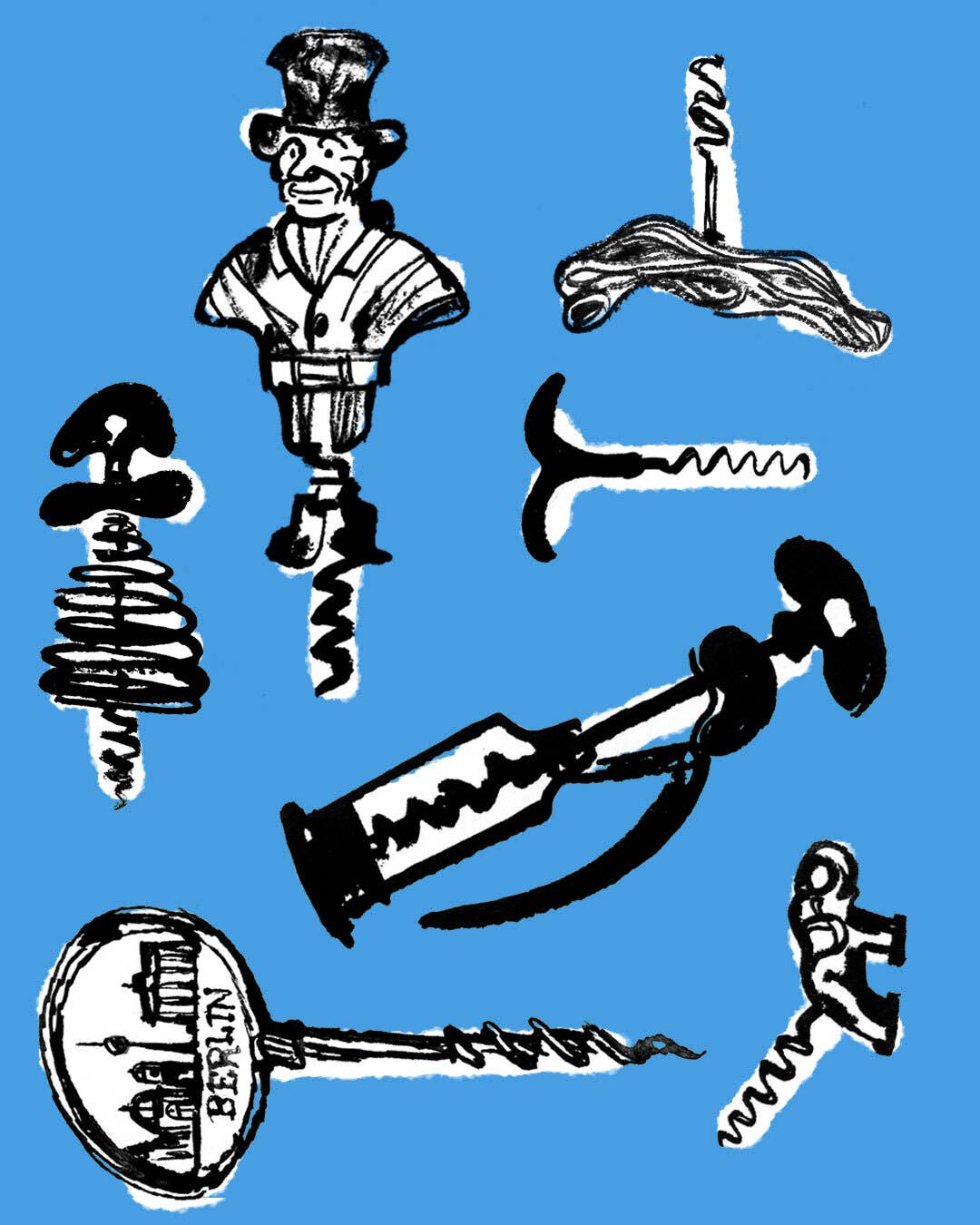
When the patron saint of the Four Seasons' Grill Room came down last year—a 19-by-20-foot Picasso curtain that had presided over the dining room since 1959—formal "power lunching," it appeared to many New Yorkers, had finally run its course. Before the Four Seasons' Picasso was furled, a lunch here wasn't just a meal, but the meal ("all grace, all business, nonfattening," Esquire recounted in 1979), where handshake deals were made, contracts closed, and ideas digested as easily as the restaurant's unfussy food: gravlax with dill sauce and slivered carrots plated just so, chicken salad with a rosette of cucumber and a fan of sugar snaps.
Although pop etymologists often trace the term "power lunch" to the eight-page Esquire spread in celebration of the Four Seasons, in fact, Esquire was scooped by The New York Times two years prior, in an ode to the "powerlunchers" of Le Pavillon, a French restaurant on 55th Street, where "businessmen who once felt they lived, like Roman warriors, by the sword, now live by the fork." Even so, the Four Seasons provided the blueprint from which the ideal power lunch destination was born: A mise en scène to impress counterparties, generously spaced tables for privacy, and a meal that lasted no longer than an hour from menu to check. (Every dish at the Four Seasons was designed to take no more than 12 minutes to prepare.)

Though the power lunch is by no means confined to New York, its cadence seems most conducive to the practice, particularly in comparison to other metropolises—Paris, let's say, or Madrid—where midday meals run leisurely courses. In the mid 19th century, Gotham real estate tycoons flocked to Delmonico's during workday afternoons for Lobster Newburg. During the 1920's, a select group of literary nobles feasted on pancakes stuffed with chicken hash and Peach Melba's over games of cribbage at the Algonquin Hotel. By mid-century, power lunching destinations began carving out their own niches: "Ladies who Lunched" picked over salads at a well-trodden trifecta of restaurants crowned with French definite articles (Le Cirque, Le Pavillon, La Grenouille). Soon after, the publishing world chose Michael's as their own, closing three-book deals over seared scallops. "I have a lot of boring lunches, but I never have a boring lunch at Michael's," Fire and Fury author Michael Wolff once wrote.
Culturally, the term “power lunch” is inextricably linked to that of the “three-martini lunch,” although the latter seems but a louche recreational cousin to its decidedly more business-minded relative, which does not necessarily require alcohol. Both, however, came to epitomize a certain extravagance that has been condemned by lawmakers since Jimmy Carter’s 1976 presidential campaign. “When a business executive can charge off a $55 luncheon on a tax return and a truck driver cannot deduct his $1.50 sandwich,” he said, “we need basic tax reform." Even so, it was only during the Reagan administration that the tax-deductibility of business meals was reformed in his 1986 tax overhaul.
But it was shifts in culture, not tax law, that truly doomed the power lunch. These days, power is projected by powering through an entire workday without leaving one's desk. When once Mad Men could chew over ad concepts and plates of cold poached salmon, there is now more commonly wilted Au Bon Pain salads eaten over keyboards, and other more cost- and time-efficient alternatives, be they app-based food delivery services, fast-casual restaurants, or Silicon Valley's company-run food halls. Contemporary tycoons brag about not even leaving their desks to go to the bathroom, much less for an overpriced Cobb salad at a fancy place around the corner. And while the open-bar culture of the startup world has seen the three-martini lunch replaced by the three-craft-beer happy hour, there's a crucial difference: The keg is in the office now—no need to leave.
It’s easy to mourn the shift away from lavish midday meals, as it represents a cultural shift away from comfort in a rapidly-changing workforce. Fewer office workers have the time or expense account to spare these days, never mind those trapped in the piece-work grind of the “gig economy.” But there’s a decadence to power lunching that, simply put, is no longer valued as it once was. And that seems like progress: This is not, after all, an era that shares a certain world leader’s affinity for gold-plated faucets or ostentatious displays of wealth.
Keep Reading
Continue to Next Story










